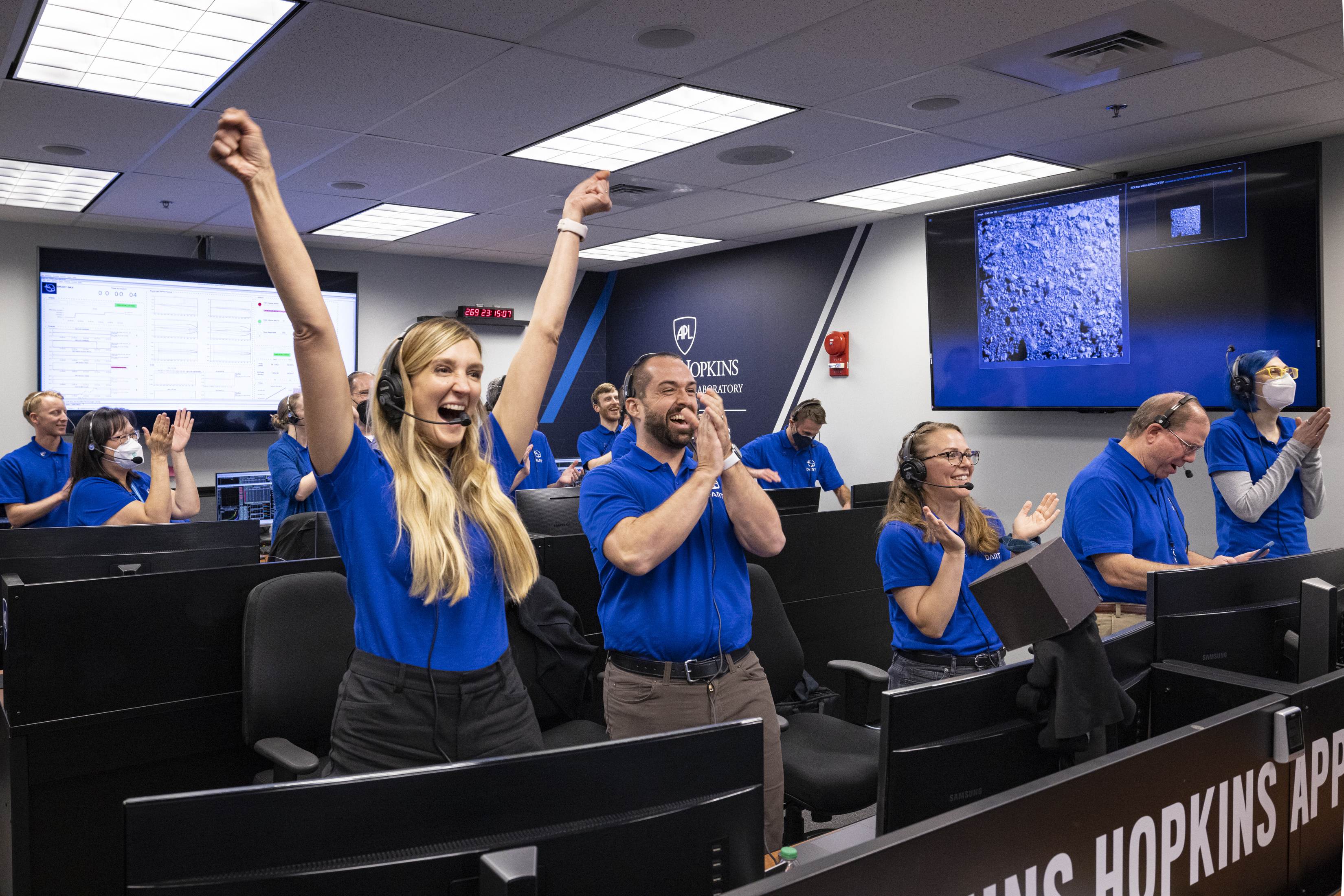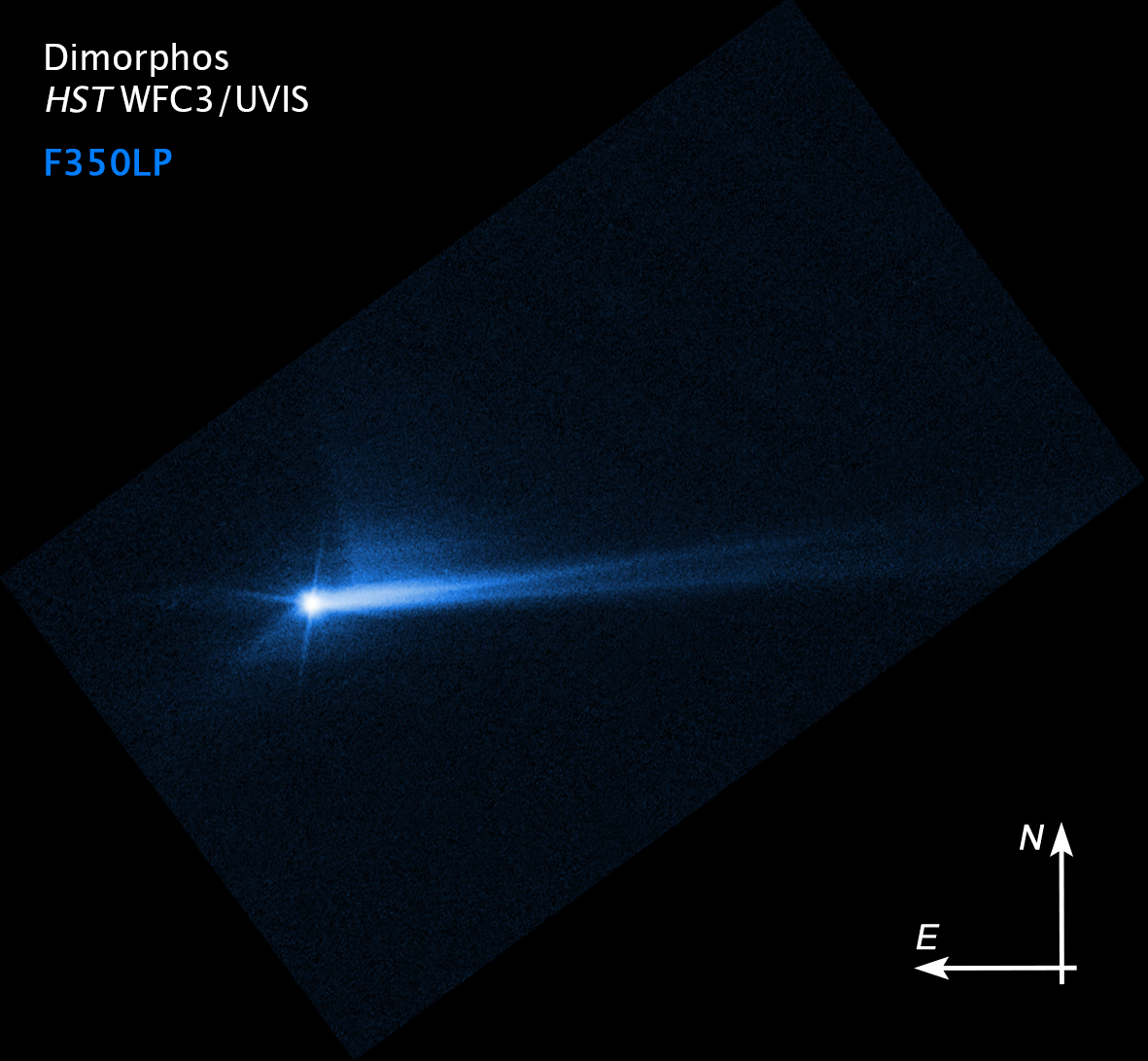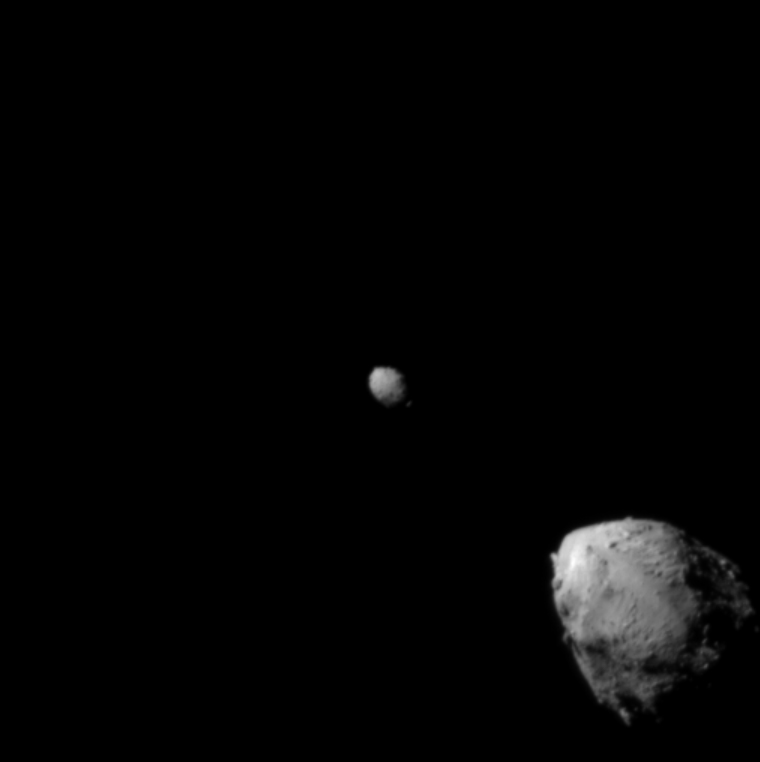Press Release
DART Mission Earns Popular Science’s ‘Best of What’s New’ for Pioneering Planetary Defense Capability
Wed, 11/30/2022 - 14:00
The editors of Popular Science magazine have named NASA’s Double Asteroid Redirection Test (DART) one of the top technology innovations of 2022.
Designed, built and managed by the Johns Hopkins Applied Physics Laboratory (APL), DART changed the orbit of a celestial body for the first time in human history, demonstrating one possible capability to defend Earth from a potential future impact. As a winner of a “Best of What’s New” award in the aerospace category, the spacecraft stands out as one of the most incredible and innovative technologies and products from the past year.

Credit: NASA/Johns Hopkins APL/Ed Whitman
On Sept. 26, after ten months of journeying through space, the experimental DART spacecraft — roughly the size of a vending machine — hurtled toward a binary asteroid some 7 million miles (11 million kilometers) from Earth at a speed of roughly 14,000 miles (22,530 kilometers) per hour. Equipped with a state-of-the-art imaging system that worked in tandem with a sophisticated onboard set of targeting, guidance, navigation and control algorithms, DART autonomously identified and distinguished between the two asteroids in its final moments, targeted the smaller body (which could not be seen from Earth) and crashed into it.
The intentional impact marked the world’s first planetary defense technology demonstration and humanity’s first successful attempt to move a celestial object.
“We are thrilled to have DART and our visionary team recognized for this remarkable success,” said APL Director Ralph Semmel. “Creating game-changing innovations like DART is what motivates us every day at APL, and in these times of uncertainty, it is inspiring to know that humanity now has a capability that could one day be used to protect our planet and save life on Earth as we know it.”
The asteroid target consists of two bodies: The smaller is Dimorphos, just 530 feet (160 meters) in diameter. It orbits the larger, 2,560-foot (780-meter) asteroid, Didymos. Neither posed a threat to Earth, but the system served as the perfect proving ground for the DART experiment, confirming NASA can successfully deploy a spacecraft to intentionally collide with an asteroid to deflect it, a technique known as kinetic impact.
In the days after impact, mission scientists analyzed preliminary data from telescope and radar observations on Earth and in space to confirm that DART had shortened Dimorphos’ orbital period around Didymos by about 32 minutes, far more than the mission’s minimum requirement of 73 seconds.

Credit: NASA/European Space Agency/Space Telescope Science Institute/Hubble
While our planet has been pelted with bits of interplanetary dust and rock for billions of years, much of this is harmless and burns up in Earth’s atmosphere. But there are rare instances when bigger objects make their way through the atmosphere and cause local damage. To avoid catastrophic devastation on a far larger scale, experts wanted to take experiments beyond the laboratory and test a capability they believed was most viable.
“The DART mission demonstrated an essential tool we might use in the event of an asteroid threat to Earth, and sets a solid foundation for future planetary defense missions and technology demonstrations,” said Lindley Johnson, NASA’s planetary defense officer.
“I’m incredibly proud of the team of engineers and scientists who conceived, developed and operated humanity’s first planetary defense test mission,” said Bobby Braun, head of APL’s Space Exploration Sector. “The vision, dedication and daring of this team reminds me how far our nation’s space program has advanced and how important our space program is to life on Earth.”
Scientists will continue to use the telescopic observations of the Didymos system, images of Dimorphos taken by the onboard DRACO camera and images of the DART impact event collected by the Italian Space Agency’s Light Italian CubeSat for Imaging of Asteroids (LICIACube) — along with data collected later by the European Space Agency’s Hera mission — to build more accurate models and better prepare us to successfully defend the planet should a future asteroid impact threat ever be discovered.
APL was previously recognized by Popular Science in 2018 for its work creating and operating NASA’s Parker Solar Probe — humanity’s first mission to “touch” the Sun — which earned the publication’s Innovation of the Year award.
